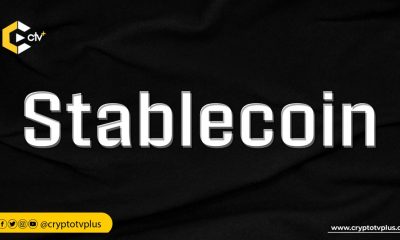News
Coingecko Latest Report Reveals Stablecoin Trends and Market Shifts in 2024

A recent report by Coingecko reveals that in 2024, stablecoins make up 8.2% of the global crypto market cap, which surpasses $2 trillion. The stablecoin market has undergone significant evolution over the past few years.
In early 2020, stablecoins represented only about 2% of the global cryptocurrency market cap. However, during the DeFi boom later that year, their dominance increased to 6%.
Between November 2021 and May 2022, the rise of Terra’s UST stablecoin caused a sharp spike in market share, from 4.8% to 15.6%. After UST’s collapse, the market briefly dipped but then surged to 18.4% as investors sought stability amidst the broader crypto bear market. This trend underscores how stablecoins can act as a haven during periods of volatility.
The report also shows that USDT, USDC, and DAI are held by over 97% of stablecoin holders. Coingecko noted, “The other eight stablecoins have less than a million holders each, with DAI held by just over 505,000 wallets.”
Stablecoins, and the dominance of Tether and Circle
Stablecoins are cryptocurrencies designed to maintain a stable value by pegging themselves to an external asset, typically a fiat currency like the US dollar. They aim to provide the benefits of cryptocurrencies, such as fast and secure transactions, while mitigating the price volatility often associated with traditional cryptocurrencies like Bitcoin.
Stablecoins offer several key features that have contributed to their popularity. The foremost is price stability, as they are designed to maintain a consistent value, usually pegged 1:1 with a fiat currency. Most stablecoins are backed by reserves of the pegged asset or other collateral, providing a level of security for users. Their primary use cases include trading cryptocurrencies and facilitating cross-border payments.
There are four main types of stablecoins: fiat-collateralized, backed by reserves of fiat currency; commodity-backed, pegged to commodities like gold or silver; crypto-collateralized, backed by other cryptocurrencies; and algorithmic, which use algorithms to maintain price stability.
Tether (USDT) has become a dominant player in the stablecoin market. As of late June 2024, Tether was the third-largest cryptocurrency by market capitalization, valued at over $112 billion. Initially, Tether claimed to be fully backed by US dollars but later revealed it had only 27.6% in fiat backing.
This disclosure led to regulatory issues, culminating in a $41 million fine by the Commodity Futures Trading Commission for misleading consumers about its reserves. Despite these controversies, Tether remains widely used in the crypto ecosystem.
Read also: Tether, Tron, and TRM Labs team up to fight crypto crime
Circle, the company behind USD Coin (USDC), has also made significant strides in the stablecoin space. USDC is known for its regular audits and transparency regarding its reserves, which has helped it gain popularity among institutional investors due to its perceived stability and regulatory compliance.
Circle has been expanding USDC’s use cases beyond trading, including in decentralized finance (DeFi) applications.
The impact of Tether and Circle on the stablecoin space has been substantial. Together, they account for a large portion of the stablecoin market cap, and their growth has attracted increased regulatory attention. Both companies have driven innovation in stablecoin technology and use cases, enhancing overall trust and adoption of stablecoins in the crypto ecosystem.
Fiat and commodity-backed stablecoins
CoinGecko reported that the total value of fiat-backed stablecoins, linked to traditional currencies like the U.S. dollar, reached $161.2 billion. Although this is a significant figure, it is still below its peak of $181.7 billion in 2021.
Commodity-backed stablecoins, supported by assets like gold or oil, also saw growth in 2024, rising by 18.1% to $1.3 billion. However, this remains a small fraction compared to fiat-backed stablecoins, representing just 0.8% of their total value.
CoinGecko highlighted a major issue with stablecoins: maintaining their value, or “peg,” during market uncertainty.
“Stablecoins tend to de-peg during volatile periods such as the March 2023 banking crisis due to uncertainty surrounding deposits at Silvergate and Signature Bank,”Coingecko said.
In summary, while stablecoins are designed to remain stable, they can lose that stability during economic or cryptocurrency market turbulence.
























